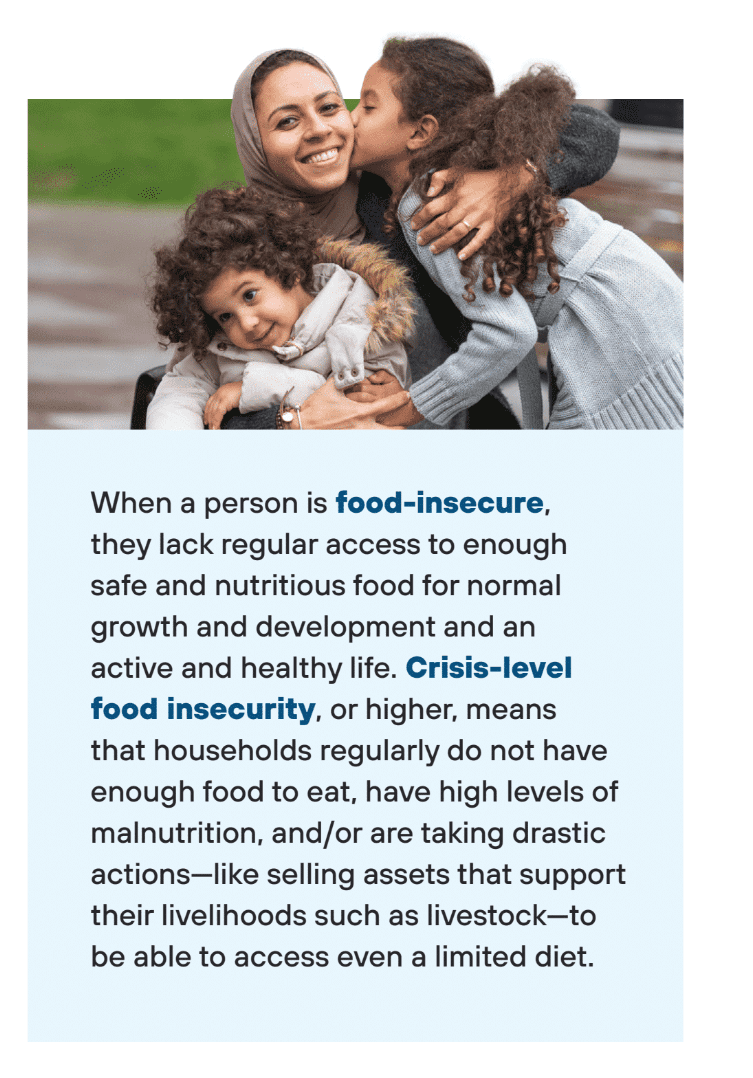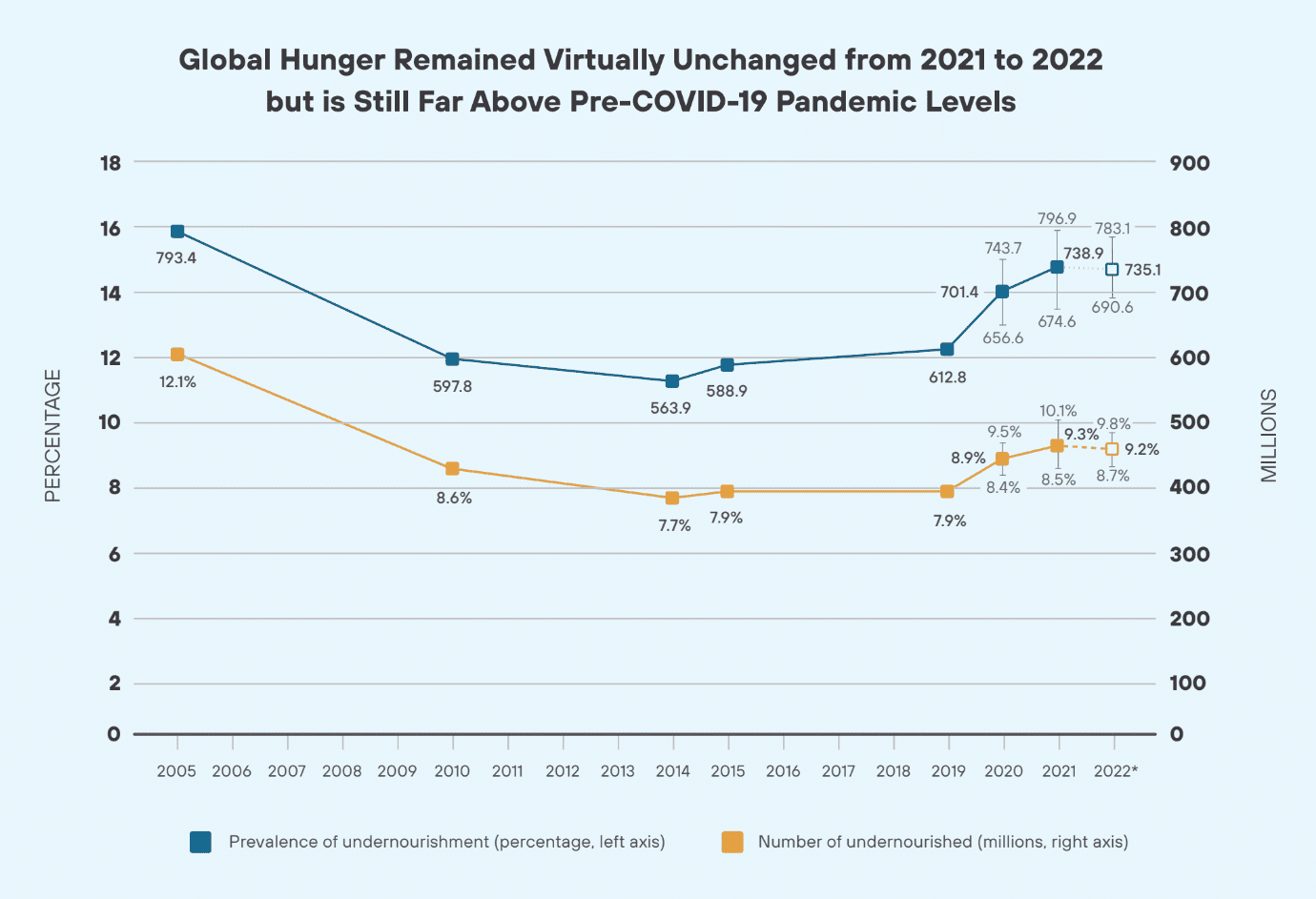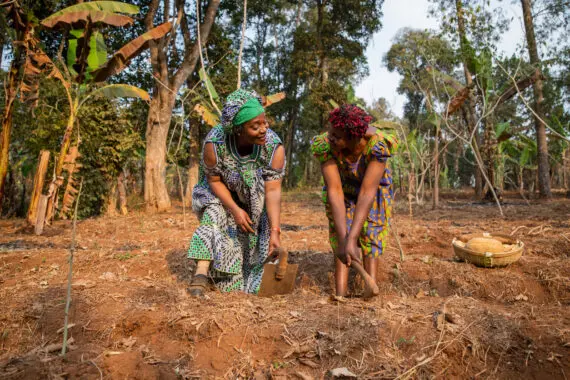After decades of progress, global hunger began to reverse course in 2014. It is still on the rise, with conflicts, climate change, and economic downturns driving the increase. Yet, we know hunger is solvable. Collectively, the world already grows enough food to feed everyone, and the U.S. government has the power and resources to make a historic impact on hunger. That is why Bread and our partners work tirelessly to urge our nation’s decision-makers to prioritize policies and programs that will end hunger.

In 2022, chronic hunger, as measured by not consuming enough calories to lead an active and healthy life, affected about 9.2 percent of the global population—nearly 1 in every 10 people. This is far higher than the rate in 2019, before the COVID-19 pandemic, which was 7.9 percent.
This means about 735 million confronted hunger in 2022. The pandemic forced an estimated additional 122 million people around the world into hunger.
Researchers estimate that in 2022, nearly 3.1 billion of the world’s 8 billion people will be unable to afford a healthy diet. This number is likely to have increased since then because global food prices surged when Russia invaded Ukraine.
Food insecurity takes into account a person’s access to safe, nutritious, and affordable foods—not just calories. There are significant regional disparities in food insecurity rates. In 2022, more than 1 in 2 people were food insecure in sub-Saharan Africa, while nearly 1 in 3 people were food insecure in Asia, Latin America, and the Caribbean.

NOTES: *Projections based on nowcasts for 2022 are illustrated by dotted lines. Bars show lower and upper bounds of the estimated range.
SOURCE: FAO. 2023. FAOSTAT: Suite of Food Security Indicators. In: FAO. [Cited 12 July 2023] www.fao.org/faostat/en/#data/FS
In 2022, over a quarter of a billion people experienced crisis-level food insecurity in 58 countries. These families required urgent food assistance for their health and nutrition needs, and more than 40 percent lived in just 5 countries: the Democratic Republic of the Congo, Ethiopia, Afghanistan, Nigeria, and Yemen.
“1,000 Days” is shorthand for the time between pregnancy and a child’s second birthday—the most critical window for human nutrition. When children suffer from chronic hunger and lack essential nutrients during this period of early childhood, the results can be fatal.
In 2022, nearly 7 percent of children globally were affected by child wasting, or acute malnutrition— the life-threatening result of poor nutrition and/or recurrent illnesses. This is nearly 1 child in every 15, most of whom live in Africa and Asia.
Those who survive hunger during the 1,000 Days are at high risk of stunting— lifelong damage to their health and their physical and cognitive development that experts believe is largely irreversible. More than one-fifth of the world’s children under 5, an estimated 22 percent, are affected by stunting. Nearly all children affected by stunting live in Africa or Asia.



